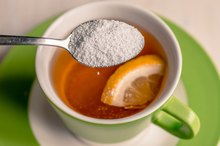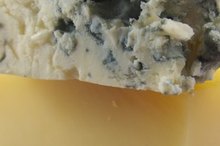Sucrose, Dextrose & Maltodextrin
Sucrose, dextrose and maltodextrin are common ingredients in packaged and prepared foods. Sucrose is table sugar; dextrose is another name for the common sugar, glucose. Maltodextrin is made from starch and retains many of starch’s chemical properties. All three are carbohydrates that affect your cells in similar ways and are used for the same things by the body.
Sucrose
Sucrose is a disaccharide, a carbohydrate made of two smaller sugar units called monosaccharides, explain Drs. Reginald Garrett and Charles Grisham in their book “Biochemistry.” The specific monosaccharides that bond chemically to form sucrose are fructose, or fruit sugar, and glucose, one of the most common molecules -- and the most common carbohydrate -- found in nature 1.
Dextrose
Macromolecules in the Human Digestive System
Learn More
Dextrose is another name for glucose, also a sugar. It does not taste as sweet as sucrose because sucrose also contains fructose, which binds much more tightly to the sweetness receptor in the human mouth than glucose does. Regardless of sweetness, both dextrose and sucrose contain four calories per gram. Dextrose is a popular ingredient in many packaged foods because it can be made from starch, while sucrose must be extracted from sucrose-rich plants, such as sugar cane.
- Dextrose is another name for glucose, also a sugar.
- Dextrose is a popular ingredient in many packaged foods because it can be made from starch, while sucrose must be extracted from sucrose-rich plants, such as sugar cane.
Maltodextrin
Maltodextrin, like dextrose, comes from starch. It is a polysaccharide, made of many monosaccharide units, all of which are glucose. Maltodextrin does not have a specific chemical formula; molecules of this substance can consist of two to about 20 glucose units. Not as sweet as glucose, maltodextrin is sweeter than starch because smaller molecules of maltodextrin can bind to the sweetness receptor, though larger maltodextrin molecules cannot. It is used in foods to impart both a starchy texture and slightly sweet flavor. Like other sugars, maltodextrin contains four calories per gram.
- Maltodextrin, like dextrose, comes from starch.
- Maltodextrin does not have a specific chemical formula; molecules of this substance can consist of two to about 20 glucose units.
Considerations
Fructose Vs. Sucrose
Learn More
Your cells use sucrose, dextrose and maltodextrin in identical ways, though you take them up from the digestive tract differently. Dextrose requires no digesting, but enzymes are necessary to help you break sucrose and maltodextrin down into their monosaccharide units, which can then be absorbed. Once in the cells, monosaccharides from any of these sources provide for immediate energy. Alternatively, your cells can transform them into storage molecules, such as glycogen or fat, for use during periods of fasting.
- Your cells use sucrose, dextrose and maltodextrin in identical ways, though you take them up from the digestive tract differently.
- Dextrose requires no digesting, but enzymes are necessary to help you break sucrose and maltodextrin down into their monosaccharide units, which can then be absorbed.
Related Articles
References
- “Biochemistry”; Reginald Garrett, Ph.D., and Charles Grisham, Ph.D.; 2007
- “Biochemistry”; Mary Campbell, Ph.D., and Shawn Farrell, Ph.D.; 2005
- “Human Physiology”; Lauralee Sherwood, Ph.D.; 2004
- U.S. Food & Drug Administration. ‘Gluten-Free’ Means What It Says. Updated May 11, 2018.
- The Sugar Association, Inc. Nutrition Labeling.
- GrokFood Online Food Additives Database: U.S. Code of Federal Regulations.
Writer Bio
Kirstin Hendrickson is a writer, teacher, coach, athlete and author of the textbook "Chemistry In The World." She's been teaching and writing about health, wellness and nutrition for more than 10 years. She has a Bachelor of Science in zoology, a Bachelor of Science in psychology, a Master of Science in chemistry and a doctoral degree in bioorganic chemistry.









